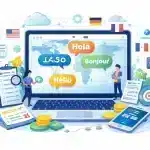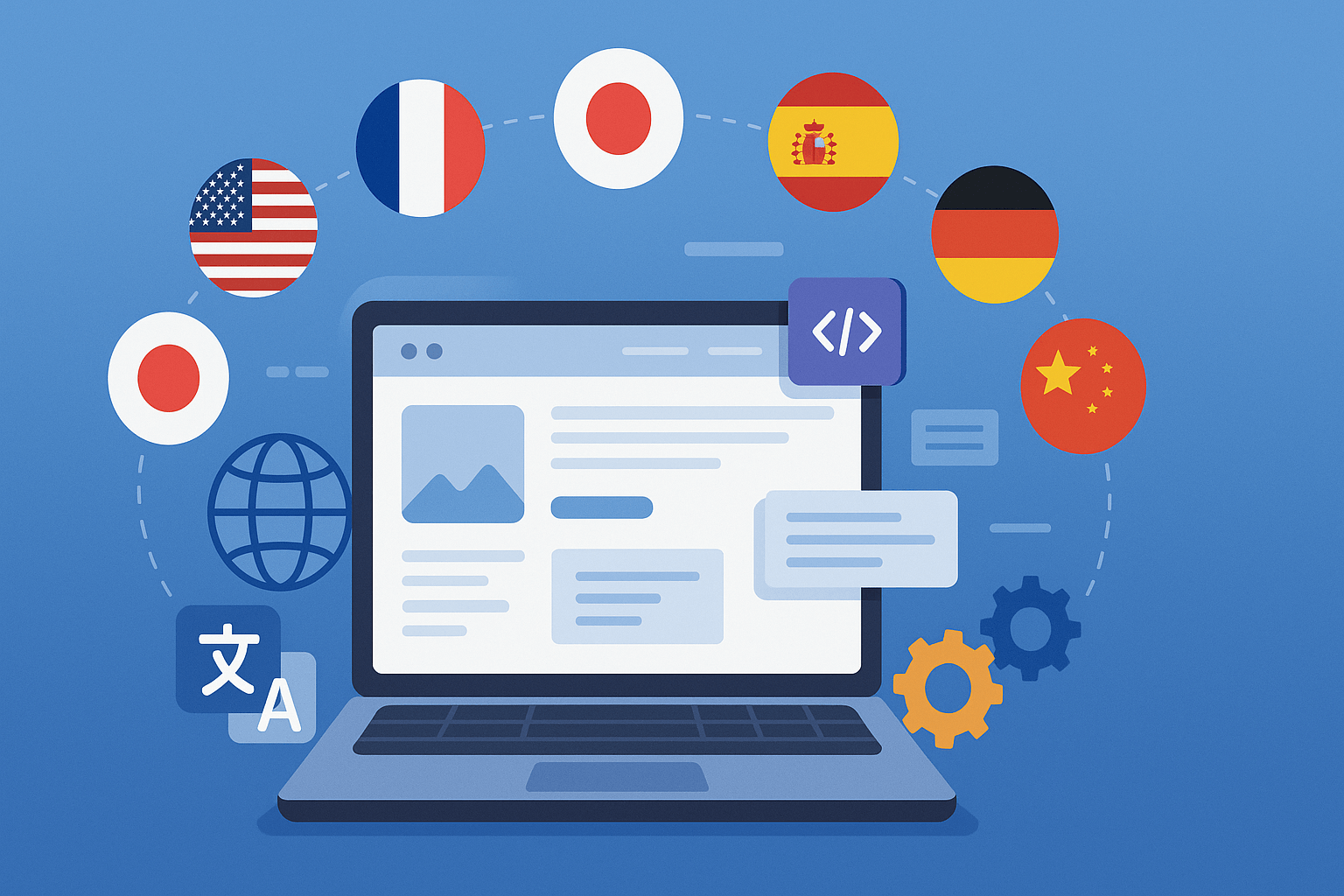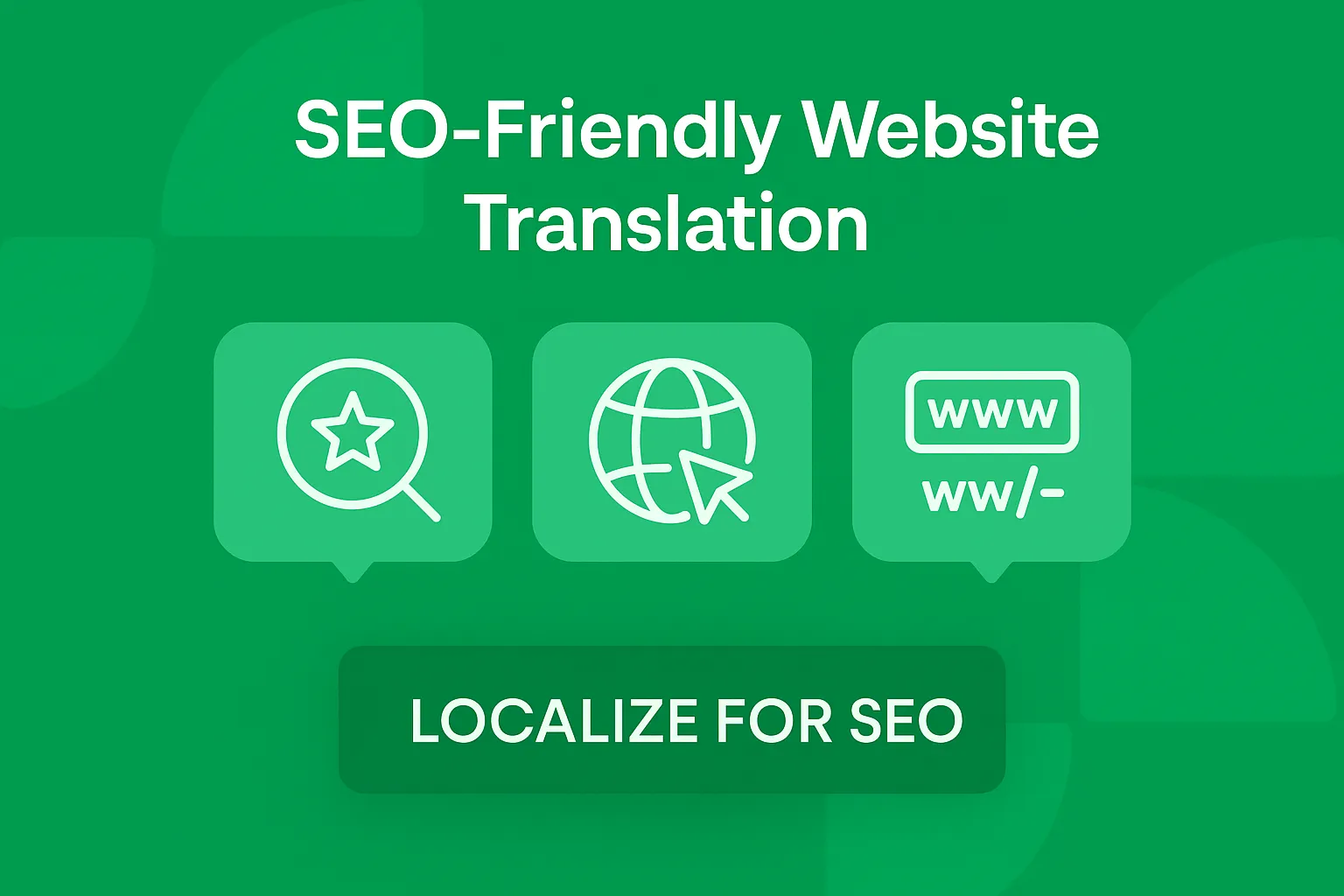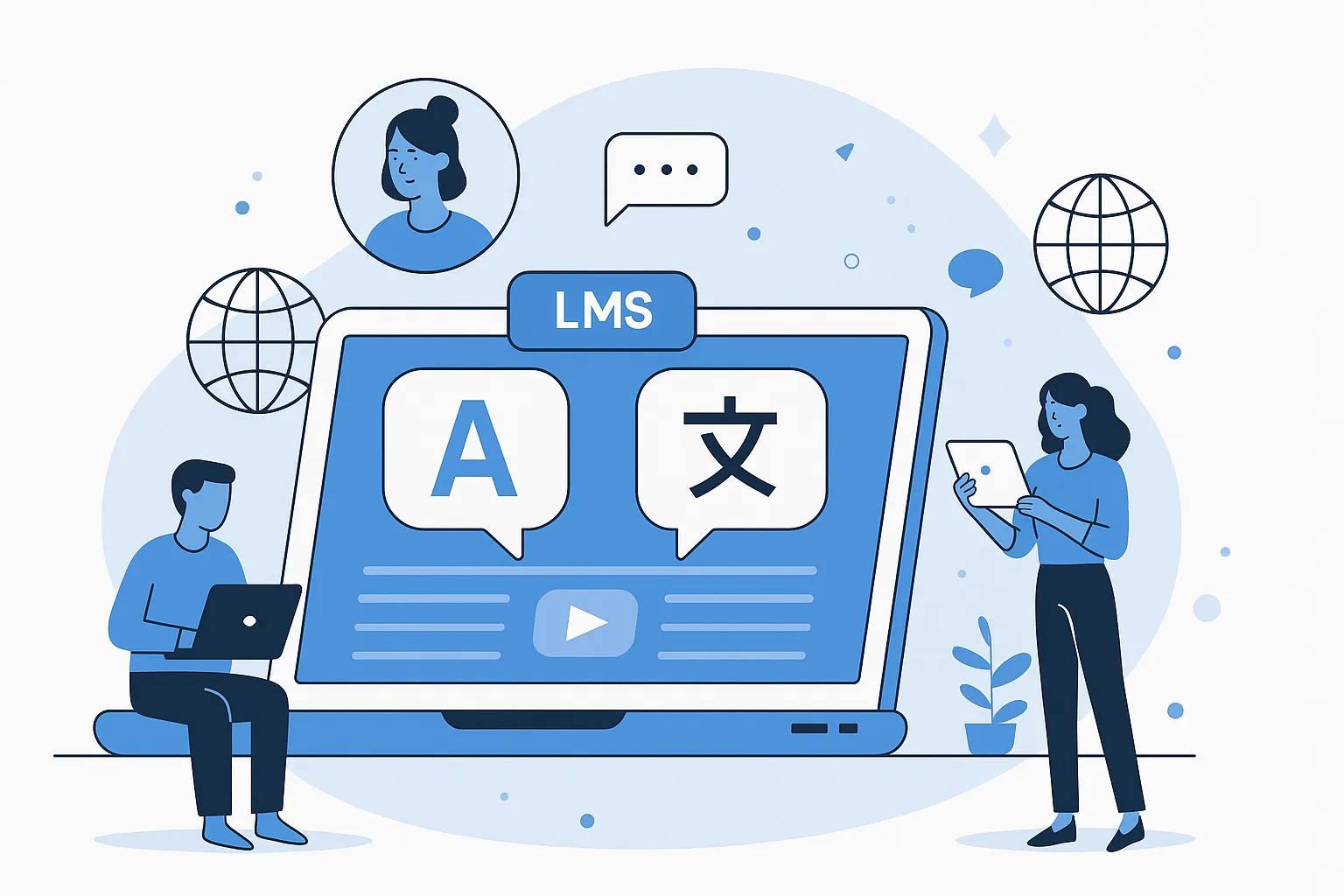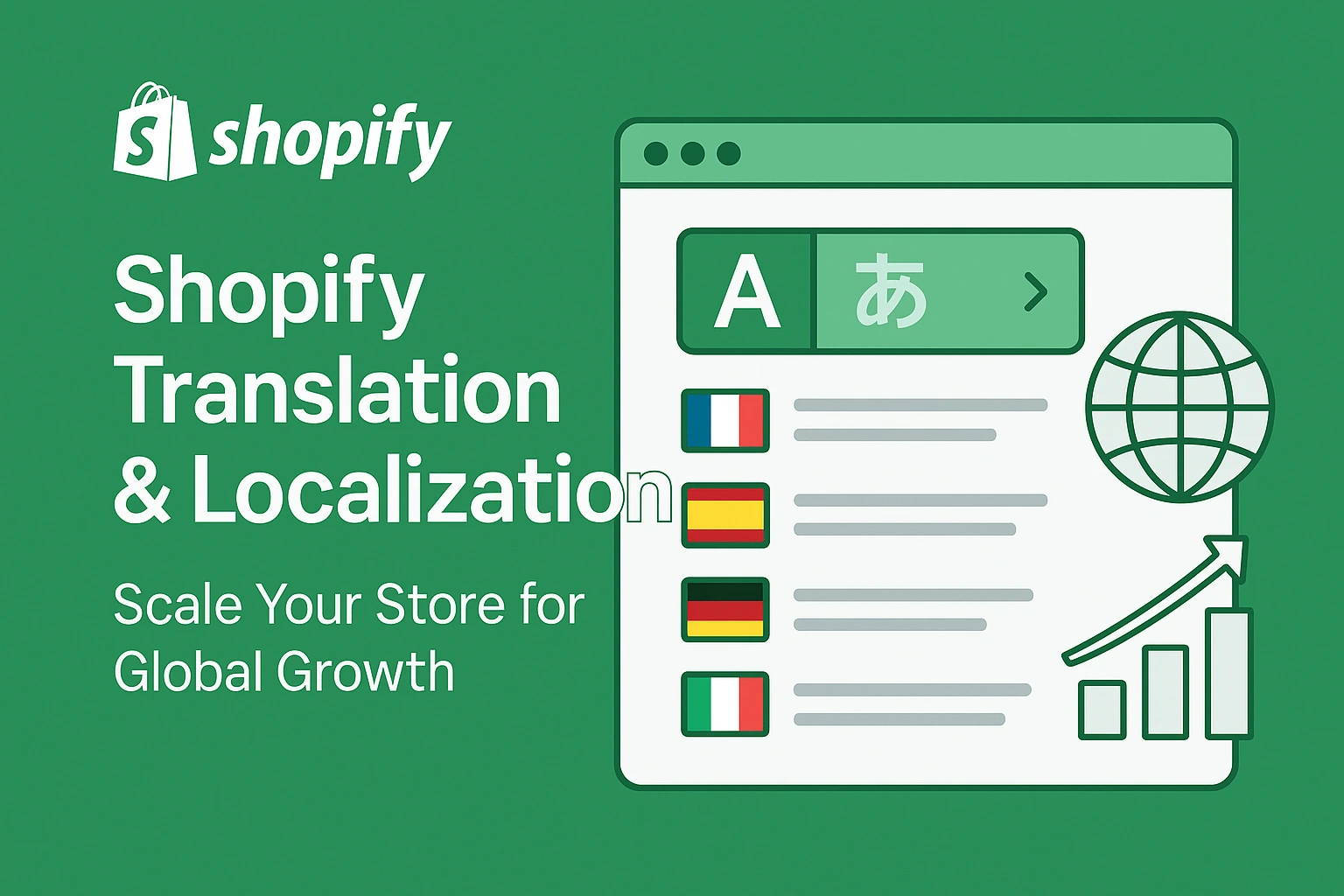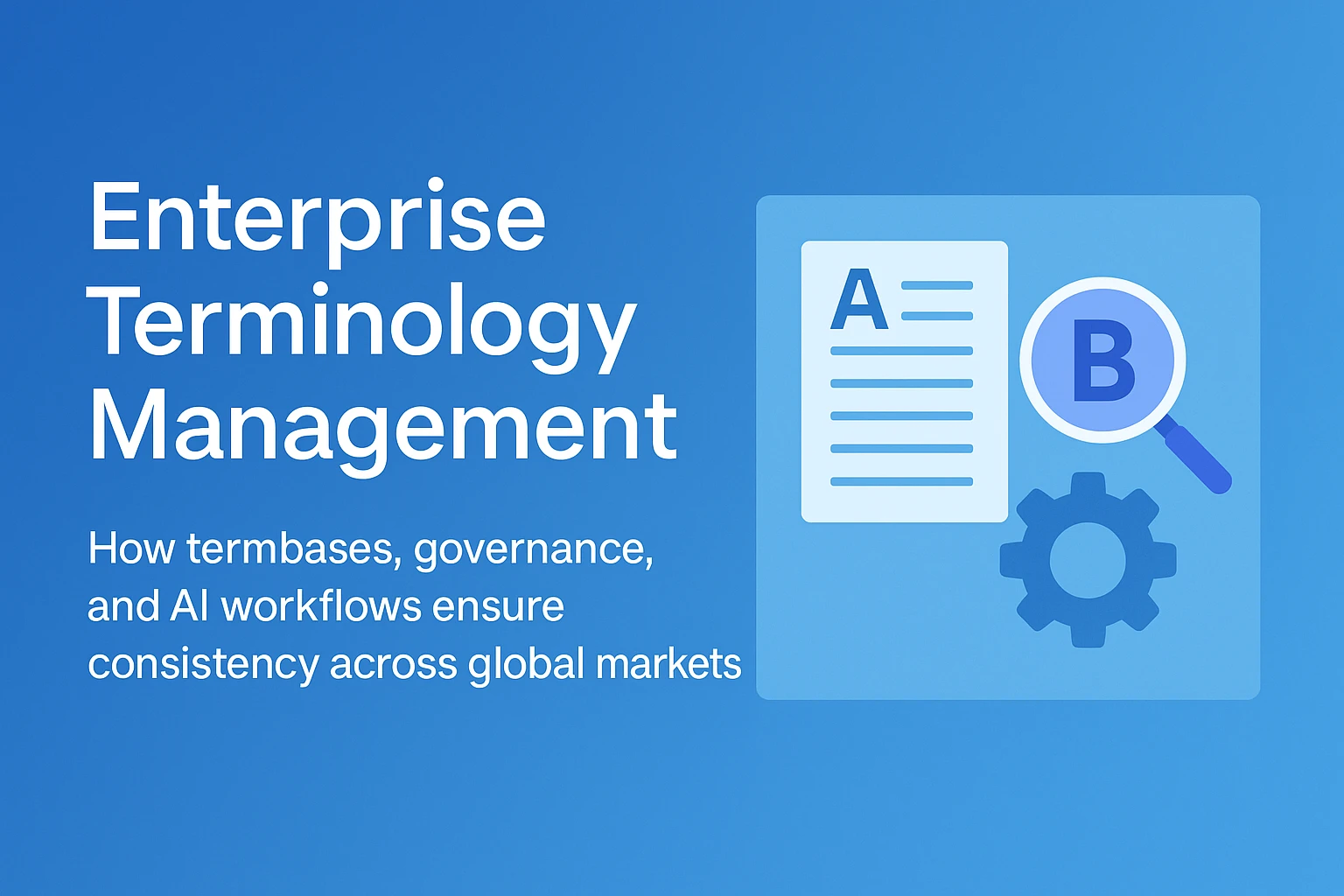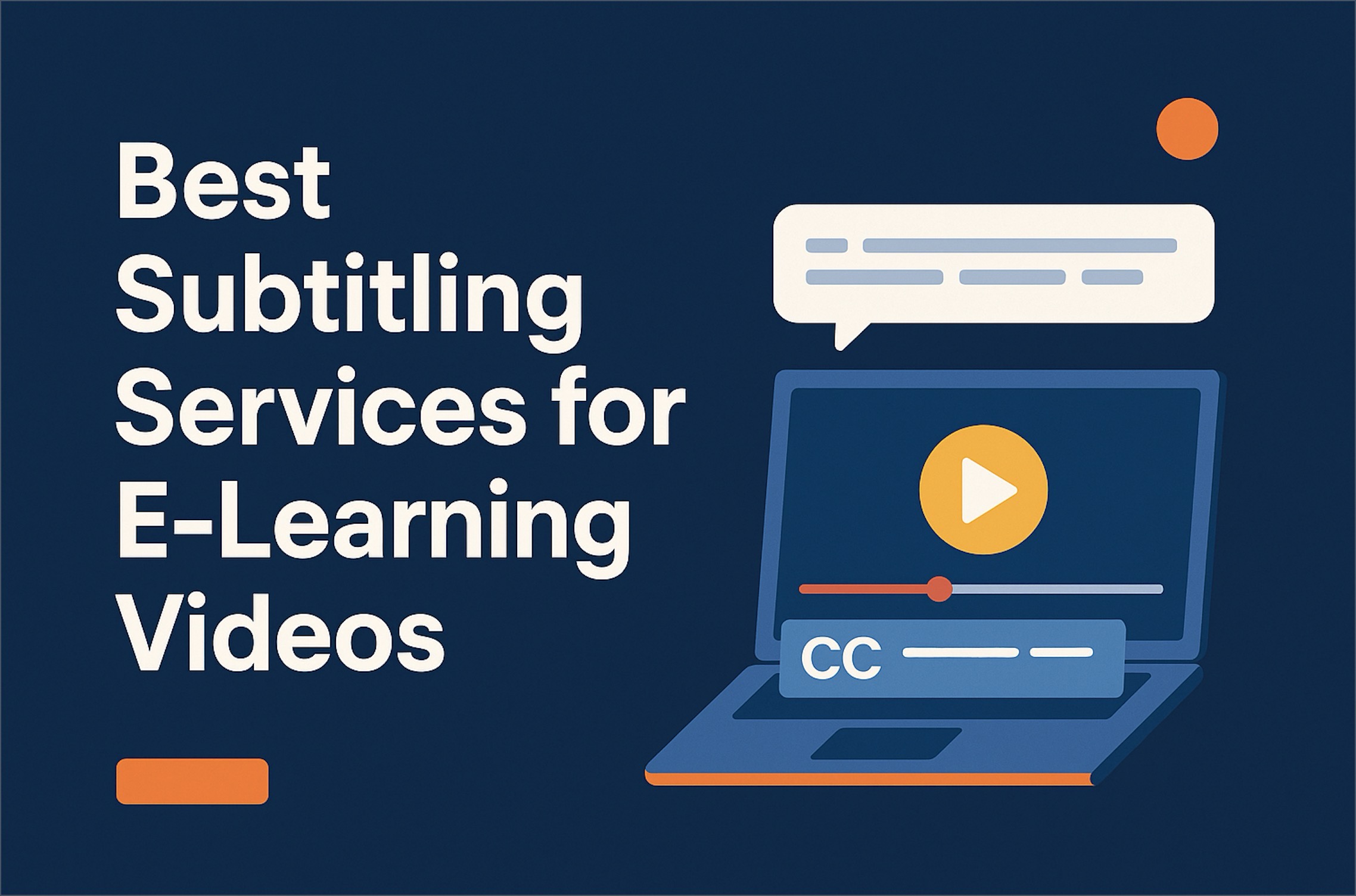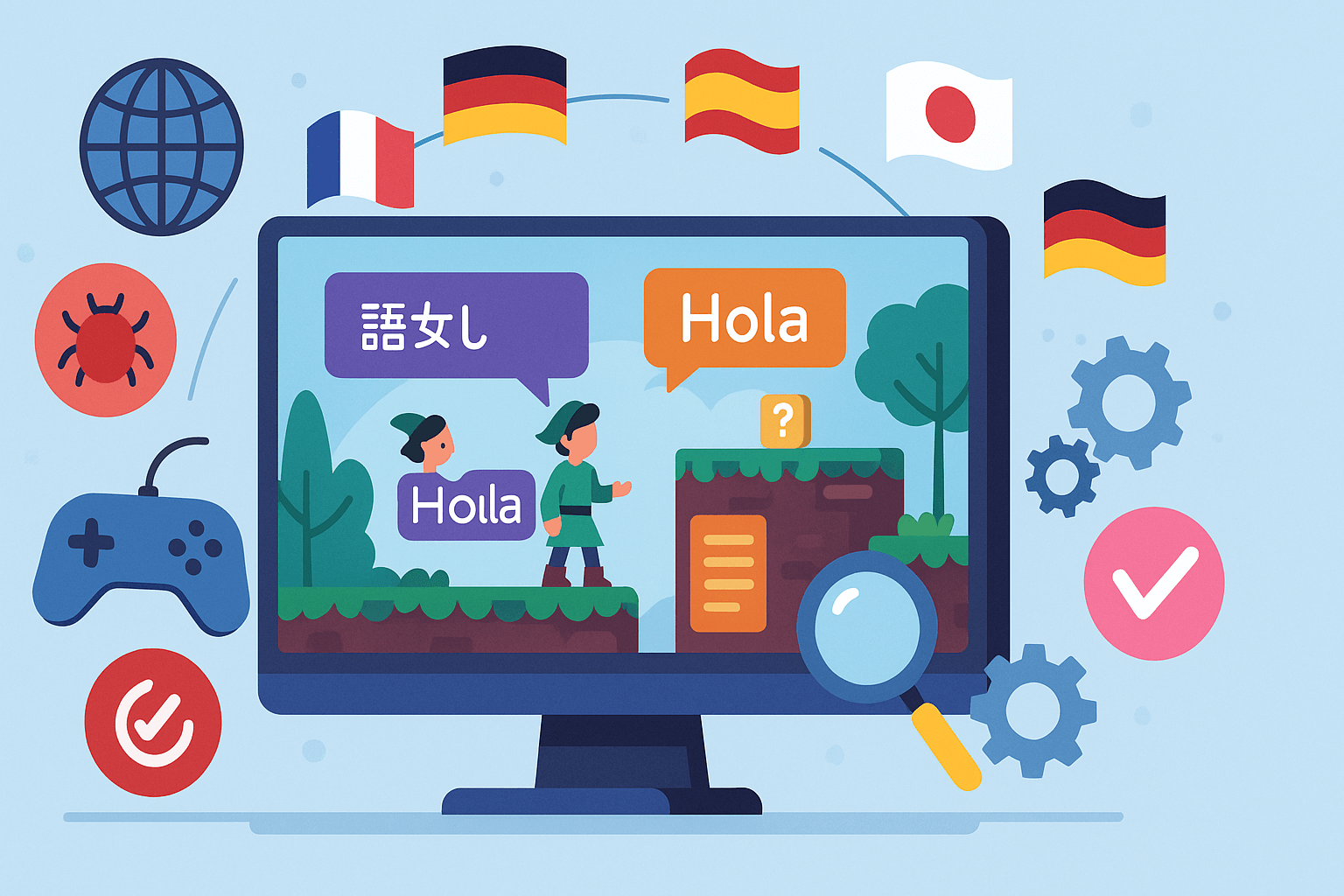In 2025, your website is your primary global storefront. Prospects research you, customers purchase from you, and regulators review your compliance materials through your website.
If your digital presence isn’t localized, you’re already behind competitors who are scaling across multiple regions with confidence.
But localization today is much more than just translating words. It’s about adapting language, UX, SEO, functionality, compliance, and cultural signals to make your site resonate in every market.
A multilingual website localization process provides the structured playbook B2B companies need to launch faster, maintain brand consistency, and stay compliant across regions.
At Circle Translations, we help companies expand into 120+ languages, with 24/7 project management, ISO-aligned QA, GDPR-ready workflows, and connector-driven automation.
This guide outlines a 12-step process that leading enterprises follow in 2025.
What is website localization in 2025 (and how is it different from translation)?
Website translation = converting text from one language into another.
Website localization = adapting the entire online experience for each market.
In 2025, the difference between website translation and website localization has become critical for global businesses.
Website translation is the process of converting text from one language into another, which is useful but has its limitations.
Website localization, on the other hand, is a comprehensive adaptation of the entire online experience, ensuring that every element of your site feels native to each target market.
Where translation changes words, localization transforms the full digital experience, from language to UX, from compliance to search visibility.
Here’s what modern website localization includes:
1. Text adaptation
Localization covers UI strings, product catalogs, CTAs, error messages, metadata, and microcopy.
Each piece of text is reviewed for context, tone, and legal clarity.
For example, a call-to-action like “Sign up now” might be localized differently in Japanese to reflect politeness levels and cultural norms.
2. UX alignment
User experience varies across regions.
Localization ensures that features like date/time formats, phone number fields, postal code rules, and currency display match local conventions.
For example, U.S. date formats (MM/DD/YYYY) would confuse users in Germany or France, where DD/MM/YYYY is standard.
Correct UX localization reduces friction in checkout flows and onboarding forms.
3. Cultural adaptation
Images, symbols, and colors carry cultural meaning. Localization adapts imagery, icons, and even color palettes to avoid misinterpretation.
A “thumbs up” image may be positive in the U.S. but offensive in parts of the Middle East. Similarly, red can signal good fortune in China but warning or danger in Western markets.
4. Technical adaptation
Technical adjustments ensure your site works across locales. This goes beyond just design, including locale routing (example.com/de), Unicode encoding, right-to-left (RTL) layouts for Arabic/Hebrew, and form logic that adapts to local addresses or ID numbers.
Without these, localized content can break or display incorrectly.
5. SEO adaptation
Translation alone won’t win in search.
Localization implements hreflang tags, localized URLs, metadata, and keyword parity to ensure your site ranks in local SERPs.
For example, “car insurance” in English may require different phrasing in Spanish (“seguro de auto”) depending on the target region (Spain vs. Mexico).
In short, translation changes the words; localization changes the experience. In 2025, enterprises that treat localization as a strategic investment, instead of just a linguistic task, see stronger engagement, compliance alignment, and faster international ROI.
For example:
- A US pricing page listing “$1,499.99” might become 1.278,83 € in Germany.
- A Japanese form will list the postal code before the prefecture, while a US form lists the state before the ZIP code.
- A Mexican site may emphasize WhatsApp chat support, while a German site must emphasize data privacy notices.
Translation ensures people “understand you.”, whereas Localization ensures they trust you enough to buy from you.
Multilingual website localization process: the end-to-end steps
Many vendor guides mention 7–10 steps. But now, in the ever-changing market, enterprise buyers need a 12-step localization model that balances speed, quality, compliance, and SEO.
Below, we detail each phase with deliverables and procurement-ready acceptance criteria.
Step 1 — Discovery & success criteria: which markets, which KPIs?
Don’t start by translating everything everywhere. Start with analytics and ROI potential.
- Review analytics: Where is traffic already coming from? Which regions show demand?
- Market shortlist: Focus on 2–3 high-priority markets first.
- Set KPIs: Common examples include localized traffic growth, lead capture, sign-ups, or reduced support tickets.
- Stakeholder mapping: Assign owners (Marketing, Web Engineering, SEO, Compliance).
- Define Deliverable: market shortlist, KPI sheet, governance owner.
- Set Acceptance criteria: Each locale tied to a measurable KPI.
Step 2 — i18n readiness audit (before any translation)
Internationalization (i18n) is the engineering foundation for localization. Without it, text breaks, layouts collapse, and projects stall.
A checklist you can follow:
- CMS/templates support UTF-8 encoding
- String externalization (no hard-coded text)
- Support for placeholders/variables
- Right-to-left rendering for Arabic/Hebrew
- Locale routing: example.com/de/ or de.example.com
- Dynamic content: ensure APIs deliver locale-aware strings
Ensuring that all the boxes are ticked is crucial, as skipping this step will create expensive rework later.
Step 3 — Content inventory & source-quality pass
Before localization, know what you’re localizing.
- Crawl the site with tools like Screaming Frog.
- Categorize: templates, product pages, metadata, UI strings, forms, help content.
- Remove duplicates to avoid paying for repeated content.
- Clean source copy (shorter sentences, consistent style).
- Flag regulatory content (terms, disclaimers, cookie notices).
Step 4 — Toolchain: TMS/CMS connectors & workflow automation
Copy-pasting text is a risk. This not only damages the quality but can also result in costly mistakes. Enterprise teams automate.
- TMS ↔ CMS connectors: WordPress, Drupal, Shopify, Webflow, Sitecore.
- Enable push/pull automation for translations.
- Branch workflows: staging, review, production.
- Approval gates: built-in PM sign-off and linguistic QA.
Step 5 — Terminology governance (glossary + style guides)
Brand consistency depends on glossaries and style guides.
- Glossary/termbase: Product names, banned terms, technical vocabulary.
- Style guide: Tone of voice (formal vs casual), punctuation, and inclusive language.
- SEO keyword lists per locale: Ensure parity in search rankings.
- Governance: Assign glossary owner and update cadence.
Step 6 — Multilingual SEO: hreflang, metadata, and SERP parity
SEO localization prevents traffic cannibalization.
Checklist:
- Add hreflang tags per locale (en-US, en-GB, fr-FR).
- Translate metadata (titles, meta descriptions, alt text).
- Localize slugs/URLs with keywords.
- Implement schema localization (breadcrumbs, products).
- Check canonical tags to avoid duplicate penalties.
Step 7 — Translation workflow (human, MTPE, or hybrid)
Content type determines workflow. There’s no “one size fits all” solution.
Knowing that, professionals provide, multi-tiered service models, that could look something like this:
- Human-only: high-visibility pages, product copy, compliance content.
- MTPE (Machine Translation + Post-editing): FAQs, blogs, knowledge bases.
- Hybrid: drafts by MT, reviewed by human editors.
Circle Translations offers Basic, Business, Pro, and Custom tiers:
- Proofreading & native editing
- Revisions included
- Dedicated PM + 24/7 coverage
Step 8 — UX copy and media adaptation (images, CTAs, forms)
True localization touches visual and interactive elements.
- Forms: adapt postal codes, phone masks, ID fields.
- Images: adjust visuals for cultural relevance.
- Colors/CTAs: Red = positive in China, negative in finance sectors.
- Payment options: Add WeChat Pay in CN, Bancontact in BE.
Step 9 — Functional, linguistic & SEO QA (pre-release testing)
Localization QA covers function, language, and SEO.
- Linguistic QA: Accuracy, style, terminology.
- Functional QA: Locale toggles, encoding, routing.
- Layout QA: No truncation, widows/orphans, broken RTL (Arabic, Hebrew).
- SEO QA: Hreflang, sitemaps, metadata checks.
Step 10 — DTP & accessibility checks (RTL, line-breaks, aria-labels)
Accessibility and formatting drive inclusivity.
- Verify RTL layouts (Arabic, Hebrew).
- Apply CJK line-break rules.
- Localize alt text, aria-labels, transcripts.
- Ensure WCAG 2.2 compliance.
Step 11 — Release management & rollback plan
Localization must follow the software release discipline.
Here’s what it could look like:
- Roll out in phases (pilot → scale).
- Enable locale toggle.
- Maintain a rollback plan if errors surface.
- Assign owners: PM (coordination), Eng (deployment), SEO (indexing).
Step 12 — Measure, iterate, and operate continuous localization
Localization never ends. Teams must adopt continuous localization. This entails
- Tracking KPIs (traffic, conversions, pipeline).
- Scheduling quarterly reviews with linguists & SEO.
- Expanding locales based on market performance.
- Automating updates for dynamic content.
What does a great localization RACI look like? (roles & responsibilities)
RACI = Responsible, Accountable, Consulted, Informed.
One of the most common reasons website localization projects fail is unclear ownership. In enterprise teams, tasks often fall through the cracks because marketing assumes engineering will handle them, or legal assumes the vendor will take care of compliance.
That’s where a RACI framework (Responsible, Accountable, Consulted, Informed) becomes invaluable.
RACI ensures that every step of the website localization process has a clearly defined owner.
Here’s how an effective RACI chart for localization usually looks:
1. Project Manager (PM)
- Accountable for timelines, budgets, and delivery quality.
- Owns communication with internal stakeholders and the localization vendor.
- Ensures approvals, reporting, and escalation paths are in place.
2. Web Engineering
- Responsible for internationalization (i18n) fixes, CMS integration, and technical support.
- Manages issues like Unicode encoding, RTL layout handling, and connector/API functionality.
- Works closely with the vendor to ensure smooth push/pull of localized content.
3. SEO Lead
- Responsible for multilingual SEO implementation: hreflang tags, localized URLs, metadata, and schema markup.
- Ensures search parity across markets and prevents duplicate content penalties.
- Monitors performance post-launch and feeds keyword insights into glossaries.
4. Legal/Compliance
- Consulted on jurisdiction-specific disclaimers, privacy policies, and accessibility compliance.
- Provides sign-off for sensitive financial, healthcare, or regulatory language.
- Advises on risks related to cultural misrepresentation or advertising law.
5. In-Country Reviewers
- Responsible for linguistic validation.
- Approve translations for cultural fit, tone of voice, and industry accuracy.
- Often acts asthe final sign-off before a localized site goes live.
6. Vendor Linguists & Localization Partner
- Responsible for executing translations, implementing glossary/style guide rules, and managing QA.
- Provide proofing, revision logs, and deliverables in agreed formats (e.g., IDML, JSON, SRT).
- Collaborate with PM and reviewers to resolve issues.
7. QA & DTP Specialists
- Responsible for functional and linguistic QA across devices and browsers.
- Check formatting, truncations, RTL alignment, and accessibility (WCAG).
- Deliver press-ready layouts, ensuring visual consistency across locales.
Security, compliance, and governance for multilingual websites
Localization touches sensitive data. Vendors must offer:
- GDPR alignment
- NDAs signed by linguists
- Encrypted portals (no email attachments)
- Role-based access with least privilege
- Audit logs for file handling
- Certifications (ISO 17100, SOC2) available on request
How we work (B2B benefits)
At Circle Translations, we know that website localization is more than just translating words. It’s about creating a seamless, compliant, and revenue-ready online presence in every market you serve.
That’s why our workflows are designed for enterprise B2B buyers who need accuracy, scalability, and auditability at every stage.
Here’s how we deliver:
120+ Languages with Native Expertise
Our network of linguists covers 120+ global languages, from widely used business languages like German, Japanese, and Spanish to niche regional markets.
Every project is staffed with linguists who are native speakers and subject-matter experts, ensuring accuracy in both everyday UX copy and regulated technical or legal content.
24/7 Project Management and Support
We provide round-the-clock support, ensuring your localization projects move forward across time zones without delay. A dedicated project manager acts as your single point of contact, coordinating linguists, engineers, QA specialists, and reviewers.
This ensures you don’t have to manage multiple workflows.
Flexible Service Tiers
We align with your procurement needs by offering tiered workflows:
- Basic for straightforward content like blogs.
- Business with proofreading and glossary adherence.
- Pro with dual linguist review, LQA, and PM oversight.
- Custom for complex projects that require engineering support, multilingual SEO, or legal compliance checks.
This flexibility allows you to scale localization based on content type, risk level, and budget.
CMS/TMS Connector Support
Circle Translations integrates directly with popular CMS and TMS platforms (WordPress, Drupal, Shopify, Adobe, etc).
This automation reduces manual handling, eliminates copy-paste errors, and shortens publishing cycles, ideal for companies running continuous localization models.
Glossary & SEO Governance
We help establish and maintain centralized glossaries and style guides so your brand voice remains consistent across all markets. For web projects, we also build localized SEO strategies, aligning metadata, hreflang tags, and keyword lists for each target region — ensuring your localized websites rank and convert.
Broad File Compatibility
Our teams handle a wide range of formats, including IDML (InDesign), Figma, JSON, PO, and SRT files.
Whether you’re localizing complex web layouts, UI elements, or multimedia training content, we ensure smooth file handling without disrupting design integrity.
QA Aligned with MQM/DQF Standards
We follow industry-recognized quality models (MQM/DQF) to measure and validate translation accuracy. Every deliverable passes through linguistic, functional, and layout QA, so your localized website meets compliance standards and user expectations.
With Circle Translations, your website isn’t just translated — it’s engineered for global growth.
Summary
By 2025, global growth isn’t about experimenting with one-off translations. It’s about building a repeatable, governed localization engine that supports every stage of your company’s expansion.
Enterprises that treat localization as a structured process, rather than an afterthought, consistently rank higher in local search, build stronger customer trust, and capture revenue faster in new markets.
Following this 12-step process also reduces risk. You avoid broken layouts, compliance gaps, and inconsistent terminology that can undermine credibility with international users or regulators. Instead, you create a sustainable localization model that supports rapid content updates, multilingual SEO parity, and ongoing product launches.
At Circle Translations, we specialize in helping B2B enterprises make this shift. With 120+ languages, 24/7 project management, ISO-aligned QA, and secure workflows, we’re trusted by global companies to deliver accuracy, scalability, and compliance at every stage of their localization journey.
Make your website inclusive, compliant, and revenue-ready worldwide with Circle Translations as your trusted localization partner.
Frequently Asked Questions (FAQs)
How many steps are in a modern website localization process?
Most guides mention 7–10 stages, but for enterprise teams in 2025, a 12-step process is a must.
This ensures not just translation, but also i18n readiness, SEO optimization, governance, accessibility, and ongoing iteration. The flow begins with market discovery and concludes with continuous localization, ensuring localized sites stay up to date with product updates. A structured framework reduces errors, improves launch speed, and provides measurable ROI.
What’s the difference between translation and localization?
Translation is the conversion of text from one language to another. Localization goes further, adapting the user experience (UX), technical formats, cultural elements, and SEO signals to make a website feel native in each market.
For example, a Spanish translation of a US checkout page may fail if the currency, payment methods, and form fields aren’t localized for Spain or Mexico. Enterprises that invest in localization instead of translation alone see higher conversion rates and user trust.
Do we need i18n engineering before localization?
Yes. Internationalization (i18n) is the foundation that allows your site to support multiple languages without breaking. If skipped, you risk encoding errors, broken layouts, untranslated strings, or malfunctioning forms. A readiness audit should check Unicode support, string externalization, RTL handling, and locale routing. Fixing these issues upfront prevents costly rework during the translation stage and enables smooth scaling to multiple markets.
How do we choose languages to start with?
The best approach is data-driven. Use web analytics, CRM data, and regional revenue potential to identify where demand already exists. Instead of trying to localize “everywhere,” most enterprises start with 2–3 high-value markets such as German, Japanese, or Simplified Chinese. This phased rollout allows teams to test workflows, refine SEO strategies, and scale efficiently to additional locales once ROI is proven.
What testing is required before launch?
Website localization requires linguistic, functional, and SEO testing before going live. Linguistic QA ensures accuracy and tone, functional QA checks locale toggles, forms, and layouts, while SEO validation confirms hreflang, metadata, and sitemaps are correctly configured. Accessibility testing (WCAG compliance) is also critical to meet legal standards and support all learners or users. Without testing, companies risk publishing broken or misleading localized sites, leading to poor engagement and compliance issues.
Can we automate localization with TMS/CMS connectors?
Yes. Leading vendors integrate Translation Management Systems (TMS) with content platforms like WordPress, Drupal, or Shopify using connectors. This eliminates manual copy-paste, reduces errors, and accelerates publishing cycles by up to 40%. Automation supports continuous localization, allowing new content to flow directly from CMS to TMS and back after translation. Procurement teams should confirm connectors support their tech stack and workflow approvals.
What’s the cost of website localization?
Costs depend on site complexity, language pairs, and compliance needs. A simple marketing site may cost $3,000–$10,000 per language, while enterprise-grade platforms with hundreds of templates, integrations, and regulated content can cost significantly more. Pricing includes translation, SEO adaptation, QA, and DTP/layout adjustments. For procurement, it’s important to budget not only for launch but also for continuous localization and updates.
How often should localized sites be updated?
Localized websites should be reviewed at least quarterly to ensure brand, product, and legal information stays accurate. Continuous localization models automatically update dynamic content (e.g., blogs, product catalogs, UI strings) as it changes. Enterprises that delay updates risk out-of-date product info, compliance gaps, or SEO penalties in local markets. Regular updates maintain trust with customers and keep localized SEO rankings strong






